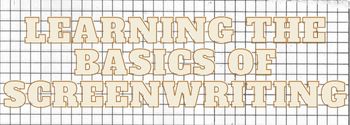In the 17th and 18th centuries, becoming a woman author was an intimidating task. It wasn’t easy to choose to tell your story from a feminine, personal perspective. Oroonoko’s and Northanger Abbey’s narrations are both done in the female voice. Oroonoko was written by Aphra behn and tells the story about an African who is captured, and then forced into servitude in Surinam. Both women can position themselves in their own unique way through the female narrative voice. Behn, and Austen both benefit from being female narrators. They gain an authoritative voice over their respective texts without having to take any personal responsibility.
Behn’s first address to her readers proves this to be true when she makes it clear that Oroonoko is a story “without the addition of invention,” one not written to “entertain [her] readers with the adventures of feigned heroes” (2137). Behn proves it in her first message to her readers when she explains that Oroonoko does not contain “any invention” and is not meant to “entertain her readers with the adventures a feigned superhero”. This was done to not only show authority but to also give credibility to the story by showing that it is a true story. Behn interjects her text to explain the context of why she was on Surinam. After explaining that upon her arrival, “the country’s best house” was given to [her] (33162), Behn explains how “her father was appointed lieutenant-general over six and thirty other islands, as well as the continent Surinam.” Informing readers of both her father’s and her own social status allows her to establish her position as a part of Surinam’s dominant and governing forces. This helps her distinguish herself from the slaves in the story and proves that she has control. Behn is able to show control by constantly using phrases such as, “I can assure my readers” and “as stated” throughout the entire story. (2140). Behn is largely silent in the parts of Oroonoko’s tale that she did not witness, but she still uses phrases like “I do assure my reader” and “as I said” to show that she controls the story. Behn is able to control how the reader perceives Behn by acknowledging her social position and constantly interjecting personal opinion.
Behn is a woman author who has a struggle with her identity. Her writing reflects this, because a female novelist in the seventeenth was a brand new concept. Behn seems to struggle with the idea of being a female writer. Her writing could reflect this as she repeatedly undermines her abilities. When she talks about Oroonoko and his story, she states, “his fate was to be born in an obscure place, where only a women could write his story.” She then contradicts that statement, claiming that there were few who could have done it better. Jacqueline Pearson states in Gender and Narrative in Aphra Behn’s Fiction that authority and power is a major theme in Behn’s writing, but “her ambiguous gender as both white and female (and hence powerless)” compromises the authorial power of Behn (187). Behn’s struggle to maintain authority in the text is a result of conforming to her social boundaries.
Austen maintains control over Northanger Abbey by expressing her opinions and claiming ownership. Austen’s initial criticism of Catherine leads to a feeling of ownership when Catherine’s behavior finally agrees with Austen. Austen gives credit to her newly improved protagonist by saying, “had she only been seen three years prior, the company would now have considered her exceedingly beautiful” (47). Austen also shows how she controls her character, saying that “I bring back the heroine into her home with shame and loneliness” (224), or “I could dismiss my Heroine to a sleepless couch”. Austen shows her control by referring to Catherine as “my heroine.” She also uses the term in a way that marks out her territory, treating Catherine almost like a possession. Austen is also in control by expressing what she thinks about women who read novels. This was a major topic of debate in the era when Northanger Abbey first appeared. Austen explains her reasons for having Catherine and Isabella reading novels. “Yes novels, because I won’t adopt that ungenerous impolitic tradition so common to novelists,” she says. Austen’s opinions strengthen her authority over the story.
Behn’s ability to shift blame from herself to others is due to the fact that she completely removes herself from Oroonoko events which may be deemed particularly disturbing by readers. Behn’s first objective moment occurs after Oroonoko is brutally whipped for leading other slaves to try and escape. Behn’s authority is always emphasized by her narration, but she is not around when Oroonoko receives his lashing. She later explains that her absence was due to the fact that she had heard of his plan to “cut off all [their] snouts” (2173). Behn has even visited Oroonoko and “protested [her] innocent of the fact”, as well as “[begged] pardons from the offenders”. Behn uses “they” to describe the perpetrators, letting her readers know that she is not responsible for the crime. Oroonoko’s murder is a second instance in which Behn uses third-person language carefully to remove herself from responsibility. Behn claims that the people who held Oroonoko “promised to do everything they could for [him]”, yet killed him once she left (2177). Because she was not physically present, Behn is not held responsible for Oroonoko’s demise. Behn uses her power as a female author to remain objective in spite of less than pleasant events. This allows the reader’s perception to be positive.
Austen, in a similar way to Behn’s, absolves herself of any responsibility for her less-than-ideal heroine Catherine. Austen begins by describing Catherine as a girl “who for many years [was] as plain as anyone” (37). Austen further denigrates her character in the following lines: “often inattentive, and sometimes stupid.” (38). She also explains that Catherine was “not outstanding” at anything that would make a heroine stand out like drawing and writing. Austen’s lack of concern and detachment towards Catherine’s character is evident when she says, “What an odd, unaccountable person!” (39). Austen casts her protagonist negatively, making it appear as if the character is a curse, and the reader will sympathize for Austen. Tara Ghoshal Wallace, in her article Northanger Abbey and the Limits of Parody examines Austen’s approach. She says that Austen mocks and undermines the method she has chosen to “keep both the narrative and the readers off balance.” (262). Austen’s ownership of Catherine begins only when Catherine turns 15 and her “appearances mended” (39). Austen maintains good relations with the audience, even though Catherine “fails miserably to reach the true hero’s height” (41), because it is clear that her character was not Austen’s fault.
Behn’s and Austen’s work was not well received because of the author’s gender. However, they managed to keep control of their texts by strategically avoiding responsibility for those parts that readers found offensive. Each author felt it important to interrupt their text to express their opinions to the reader, while maintaining face. What would be an interesting question to ask is what each text would look like if it was written from the perspective of a male author instead?
Works Cited
No change is needed.
Austen, Jane. Northanger Abbey is a novel about the life of a young woman named Catherine Morland and her experiences with society, love, and the supernatural. The story follows Catherine as she navigates the highs and lows of growing up and discovering who she is. Along the way, she learns valuable lessons about the world and herself. 2nd ed. Ed. Claire Grogran. Toronto: Broadview, 2002. Print.
Behn, Aphra. The Longman Anthology of British Literature, “Oroonoko”. 4th ed. Ed. David Damrosch. Pearson Education published a book in New York in 2010. 2137-2178. Print.
Ghoshal-Wallace, Tara. Study in the Novel, 3 (1988), 262-273. Web. Accessed November 24, 2012.
Pearson, Jacqueline. The Review of English Studies, 166 (1991), pp. 179-190. Web. Accessed November 24, 2012.

